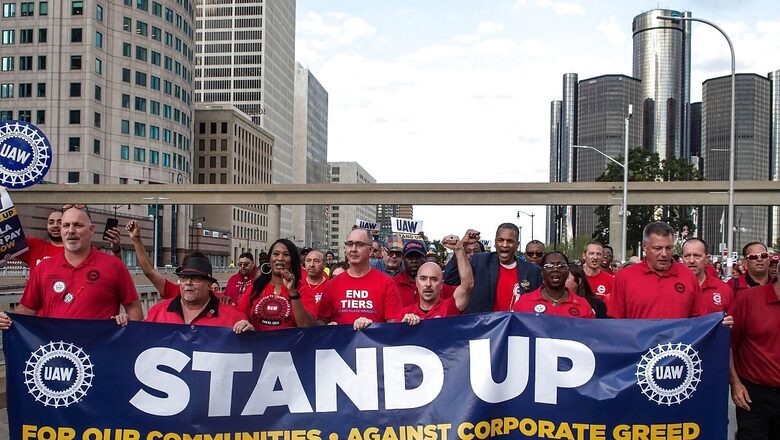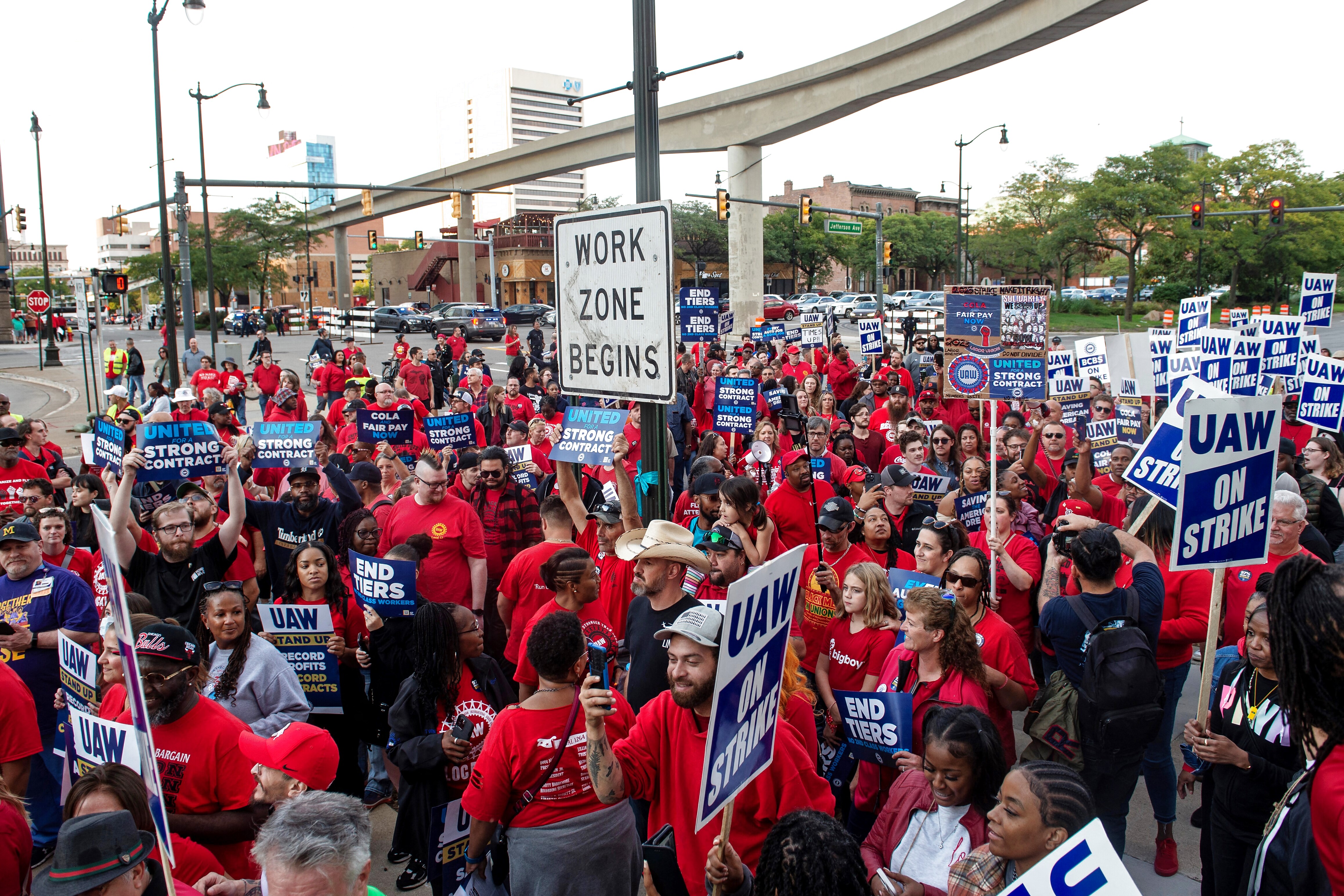
views
Around 13,000 auto workers in the US have walked off the job at three factories after their union leaders couldn’t reach a deal with Detroit’s automakers.
The United Auto Workers (UAW) union is seeking big raises and better benefits from General Motors, Ford and Jeep-maker Stellantis. The union is also demanding back concessions that the workers made years ago, when the companies were in financial trouble.
Some the union’s 1,46,000 members walked off the job at a GM assembly plant in Missouri; a Ford factory in Michigan; and a Stellantis Jeep plant in Ohio, on Thursday.
WHAT DO WORKERS WANT?
The workers are demanding 36 percent raise in general pay over four years. They are also demanding a 32-hour week with 40 hours of pay, the restoration of traditional defined-benefit pensions for new hires and a return of cost-of-living pay raises, among other benefits.
As of now, a top-scale assembly plant worker gets about $32 an hour now. The UAW workers hired after 2007 don’t receive defined-benefit pensions and their health benefits are also less generous.
The union is also demanding that they should be allowed to represent workers at 10 electric vehicle battery factories, being built by joint ventures between automakers and South Korean battery makers.
The strike comes as an auto industry transition to electric vehicles gathers momentum. All the three companies are investing billions of dollars to build new factories and reboot existing sites for the electric era.
UAW President Shawn Fain described his goal as keeping the companies off balance to maximize bargaining leverage with a targeted strike that could be expanded over time.
WHAT HAVE THE COMPANIES SAID?
General Motors, Ford and Stellantis are dubbed the “Big Three” in US carmakers and have production facilities in the Detroit, Michigan. They operate 60 percent of the country’s assembly plants, according to the American Automotive Policy Council, which represents the three companies.
The automakers have moved closer to the UAW’s demands on wages, but a big gulf remains. GM said it boosted its offer to a 20% wage increase, including 10% in the first year, over four years.

GM CEO Mary Barra said, in a letter to employees, “We are working with urgency and have proposed yet another increasingly strong offer with the goal of reaching an agreement tonight.”
Ford is also offering a 20% boost in pay. The last known offer from Stellantis (formerly Fiat Chrysler) was 17.5%, but the company has since made another.
Shawn Fain, the combative president of the UAW, has dismissed these proposals as inadequate to protect workers from inflation and reward them for building the vehicles that have made the Detroit Three so profitable.
WILL A STRIKE CAUSE CAR PRICES TO RISE?
GM, Ford and Stellantis have been running their factories around the clock to build up supplies on dealer lots. But that’s also putting more money into the pockets of UAW members and strengthening their financial cushions.
At the end of August, the three automakers collectively had enough vehicles to last for 70 days. After that, they would run short. Buyers who need vehicles would likely go to non-union competitors, who would be able to charge them more.
COULD A STRIKE HURT THE ECONOMY?
The strike could hurt the US economy if it’s long and especially in the Midwest, where most auto plants are concentrated. The auto industry accounts for about 3% of the US economy’s gross domestic product — its total output of goods and services — and the Detroit automakers represent about half of the total US car market.
If a walkout occurs, workers would receive about $500 a week in strike pay — far short of what they earn while they’re working. As a result, millions of dollars in wages would be removed from the economy.
The strike could also test President Joe Biden’s claim that he’s the most pro-union president in US history.
WHAT IS AT STAKE?
The automotive ecosystem drives some $1 trillion into the US economy each year and supports 9.6 million jobs.
In its industry report, the alliance noted that “more than $220 billion in federal and state revenue is generated annually by the manufacture, sale and maintenance of autos.”
And the sector is benefiting from the rapid growth of electric carmaker Tesla, which delivered 1.3 million EVs in 2022.
(With inputs from agencies)




















Comments
0 comment